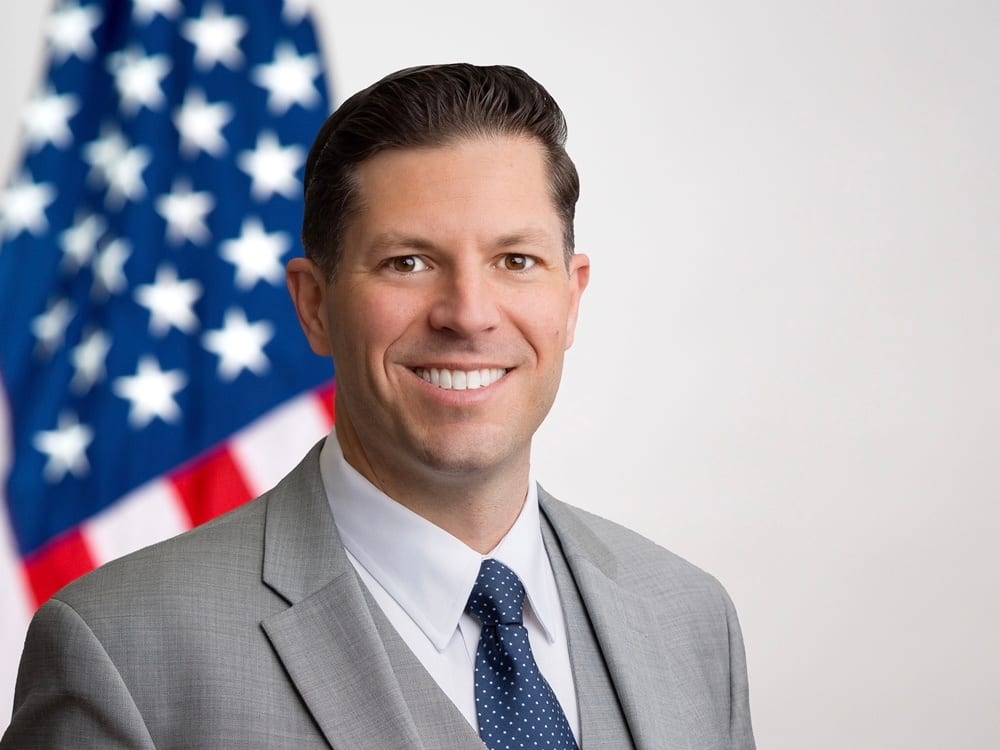november 2021

By Adam Stone, Contributing Writer
Enterprise Services
Unmanned aircraft can provide enterprise security teams with a number of potential use cases, including improving incident response, investigations and more.
Drones as Security Tools
Pakhnyushchyy / iStock / Getty Images Plus via Getty Images

At LyondellBasell, Global Director of Crisis Management and Security Scott McHugh is using unmanned aerial vehicles (UAVs) to enhance situational awareness at a large-scale manufacturing plant. The drones have proven their value.
“Chemical manufacturing plants tend to be very large with lots of acreages and, in the past, we’ve used security officers to conduct perimeter patrols,” McHugh says. “Drones are able to do those tedious and repetitive tasks very efficiently and rapidly. Plus, they never lose their focus. They are consistently attentive to their task.”
A recent event shows how drones make the company’s security efforts more efficient and effective. “As a security patrol drone was launching and climbing to its patrol height, it noticed, far into the distance, a wisp of smoke coming from an area of our property that was remote, undeveloped and difficult to access well over a mile away,” he shares. “We changed the patrol path and sent the drone to the area in question to further investigate and discovered a brush fire, which was immediately reported to our on-site fire department. It’s very unlikely that a manned security patrol would have seen that fire.”
Security industry professionals say drones have the potential to enhance their efforts across a range of industries. With eyes in the sky, security teams can expand their situational awareness while making more effective use of their human resources.
Why Drones?
“Drones give security a unique situational awareness benefit,” says Mark McCourt, Chair of the Security Industry Association’s Robotics, Drones & AI Working Group. “You’re gathering valuable sensor data that can be immediately shared. If you’re securing a facility and the perimeter, there is no better viewpoint than being in the sky.”
Drones have the potential to expand intelligence of an area, “especially in a difficult [or hazardous] environment,” says Mark Schreiber, CPP, CPD, President and Principal Consultant at Safeguards Consulting Inc.
“Say you have a fire or an explosion on a site: You need to see everything going on around that location,” Schreiber says. “With a drone, we can quickly fly over and have someone at the command station gathering that video, disseminating it to all the people that need to assess the situation and identifying the appropriate response — all without exposing a human to the environment.”
At AVANGRID, which owns 10 utility companies, Vice President and Chief Security Officer Brian Harrell says that the company uses drones primarily to track maintenance issues, but that this capability can simultaneously be leveraged in support of security.
“We own and operate a number of drones as it relates to transmission line inspections, storm damage review, things like that,” he says. “In doing that, if they recognize that there are gunshots in the side of our transformers or large insulators, security is immediately notified. Because of that drone footage and that information that we’re receiving from the drone, we are able to open up an investigation to figure out what happened and how we mitigate it for the future.”
Brian Harrell, Vice President and Chief Security Officer at AVANGRID. Image courtesy of Harrell

Mark Schreiber, President and Principal Consultant at Safeguards Consulting Inc. Image courtesy of Schreiber

James McDonald, Vice President of Global Security at CEVA Logistics. Image courtesy of McDonald

Mark McCourt, Chair of the Security Industry Association’s Robotics, Drones & AI Working Group. Image courtesy of McCourt

Scott McHugh, Global Director of Crisis Management and Security at LyondellBasell. Image courtesy of McHugh

Drones have the potential to expand situational awareness, especially in a difficult or hazardous environment.
Potential Use Cases
At CEVA Logistics, which operates close to 200 warehouses nationwide, Vice President of Global Security James McDonald has utilized drones as a force multiplier.
“A drone is not going to be asleep at two o’clock in the morning over a long holiday weekend,” he says. In addition, drones can go where people can’t. “For example, a guard won’t be able to physically walk a fence line in a low-lying marshland area, whereas a drone can provide coverage regardless of the terrain.”
McDonald also finds value in drones’ follow-up capabilities. “The drone has been used in a few incidents to follow fleeing suspects and provide police with real-time tracking information for a successful resolution,” he says.
In addition to real-time tracking of suspicious activities, McCourt says drones can provide evidentiary value to enterprise security teams. “People can only recall from memory, unless body cameras are deployed and active — which is still rare in private security,” he says. “Drones record audible evidence. This is actual evidence that can be used to manage live events as well as for forensics.”
Another application for unmanned assets, McCourt says, is facilitating collaboration among security teams. “Consider a facility fire. You can have the state, the city, the county, Hazmat, the fire department and federal resources all looking at the exact same drone-created information and deciding the best way to manage an incident,” he says. “It allows you to coordinate your response, to put your resources against the threat most effectively, while also not unnecessarily putting people at risk.”
As a private investigator who has worked extensively in the financial services sector, Scott Snide says banks and other institutions can tap drone-generated data to monitor for changes that might signal a security issue in the making.
“You can use the drone's historical flight data to create a facility baseline,” Snide says. “You can verify that a skylight or a fence was intact at a certain time, for example. If there are changes to the baseline, you can backtrack through video surveillance camera footage, security guard logs or maintenance records to further investigate what caused the changes.”
Likewise, he suggests, routine drone patrols can catch potential gaps in security protocols — gaps that a human patrol officer might miss. From its high-level view, a drone could take note of inadequate illumination in a parking lot. “The security manager can instantly identify if the lighting is actually effective in that area, and if a dead spot is found, adjustments can be made,” he says.
At the same time, drones can be used to forge a deeper partnership between security teams and local law enforcement agencies. McHugh, for example, has loaded his drones with license plate data from the Texas stolen car ‘hot sheet.’ As the drone passes by a parking lot, it can compare license plates against those on the hot sheet. Security staff have actually spotted some stolen cars this way. “We have been able to pass that information to the local police for follow-up, and they’ve recovered stolen vehicles as a result,” he says.
Best Practices
A few key best practices help support effective drone use for security purposes. First, it’s worth noting that anyone piloting a drone for commercial purposes must obtain an Federal Aviation Administration (FAA) certification to do so. “We have security officers that we sent through the Part 107 small UAV (sUAV) pilot training so they could successfully take the test to obtain FAA certification. The training takes about two-plus weeks on average to complete,” McHugh says. “We have an FAA-certified sUAV pilot on every shift, so there is a pilot always available to oversee the flight of the security drones and to take command of the drone if needed.”
Operators must also respect privacy. That means you don’t fly over adjacent properties, and it means you have clear policies about how drone-generated data is to be used. In general, these policies will mirror a security team’s existing protocols.
“You already have security cameras — they just happened to be fixed, whereas the camera on a drone is mobile,” Schreiber says. “The same general expectations come into play, but the policy should be explicit in saying that the drone video will be treated in the exact same manner. We will not put a security camera that monitors the interior of a bathroom, and we would never ask a drone to fly by a bathroom window and look inside.”
Ideally, an enterprise security team’s drone policy will spell out all aspects of its use plan, from operations to data retention. “We strongly recommend that you have a formal and comprehensive drone security program,” Schreiber says. “The key thing is to develop an understanding across the organization of what that drone will be doing, what it is expected to do and what it is not going to be allowed to do. You need to define that and communicate that.”



